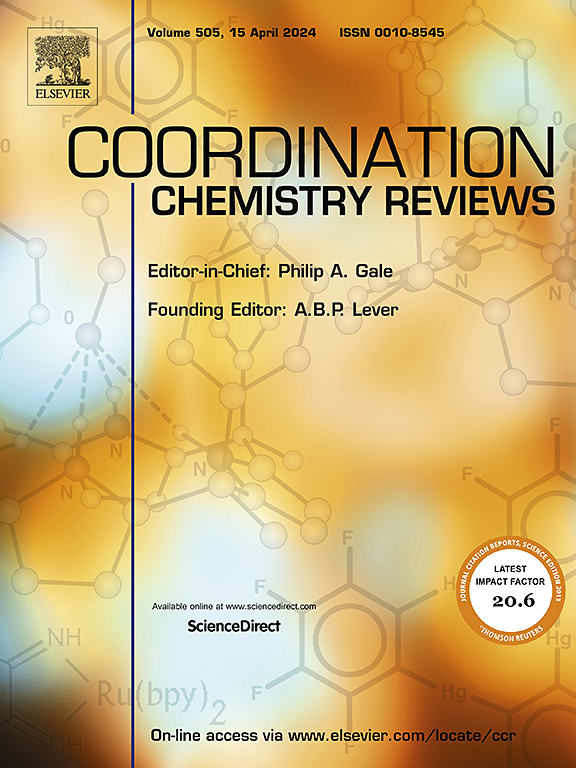Catalytic conversion of carbon dioxide over atomically precise metal clusters toward fine chemicals
IF 23.5
1区 化学
Q1 CHEMISTRY, INORGANIC & NUCLEAR
引用次数: 0
Abstract
Metal clusters with exact atomic numbers, tunable electronic properties and modifiable organic ligands have garnered extensive research interest for their potential in elucidating the structure-catalysis relationship and constructing a series of challenging chemical bonds. Among their promising applications as a new type of metal catalysts for important chemical processes, the catalytic conversion of CO2 into value-added chemicals through atomically precise metal cluster catalysis has achieved considerable success. This review begins by concisely outlining the milestone developments of atomically precise metal clusters with crystallographic structures. We then provide an overview of CO2 conversion in various catalytic systems, including electrocatalysis, photocatalysis, homogeneous and heterogeneous catalysis. Particular emphasis is placed on the significant advances in metal cluster-catalyzed CO2 fixation and utilization with organic molecules, offering fundamental insights into active site identification and modification, as well as the design and application of high-performance metal cluster catalysts. These studies have demonstrated the capability of atomically precise metal clusters to achieve remarkable catalytic performances, which will promote the exploration of new catalysts for existing catalyzed processes.
二氧化碳在原子精确金属簇上催化转化为精细化学品
具有精确原子序数、可调电子性质和可修饰有机配体的金属簇因其在阐明结构-催化关系和构建一系列具有挑战性的化学键方面的潜力而获得了广泛的研究兴趣。作为一种新型的金属催化剂,它们在重要的化学过程中有着广阔的应用前景,其中通过原子精确的金属簇催化将CO2催化转化为增值化学品已经取得了相当大的成功。本文首先简要概述了具有晶体结构的原子精密金属团簇的里程碑式发展。然后,我们概述了各种催化系统中的二氧化碳转化,包括电催化、光催化、均相催化和多相催化。重点介绍了金属团簇催化CO2固定和有机分子利用方面的重大进展,为活性位点的识别和修饰以及高性能金属团簇催化剂的设计和应用提供了基本见解。这些研究证明了原子级精密金属团簇实现卓越催化性能的能力,这将促进对现有催化工艺的新催化剂的探索。
本文章由计算机程序翻译,如有差异,请以英文原文为准。
求助全文
约1分钟内获得全文
求助全文
来源期刊

Coordination Chemistry Reviews
化学-无机化学与核化学
CiteScore
34.30
自引率
5.30%
发文量
457
审稿时长
54 days
期刊介绍:
Coordination Chemistry Reviews offers rapid publication of review articles on current and significant topics in coordination chemistry, encompassing organometallic, supramolecular, theoretical, and bioinorganic chemistry. It also covers catalysis, materials chemistry, and metal-organic frameworks from a coordination chemistry perspective. Reviews summarize recent developments or discuss specific techniques, welcoming contributions from both established and emerging researchers.
The journal releases special issues on timely subjects, including those featuring contributions from specific regions or conferences. Occasional full-length book articles are also featured. Additionally, special volumes cover annual reviews of main group chemistry, transition metal group chemistry, and organometallic chemistry. These comprehensive reviews are vital resources for those engaged in coordination chemistry, further establishing Coordination Chemistry Reviews as a hub for insightful surveys in inorganic and physical inorganic chemistry.
 求助内容:
求助内容: 应助结果提醒方式:
应助结果提醒方式:


